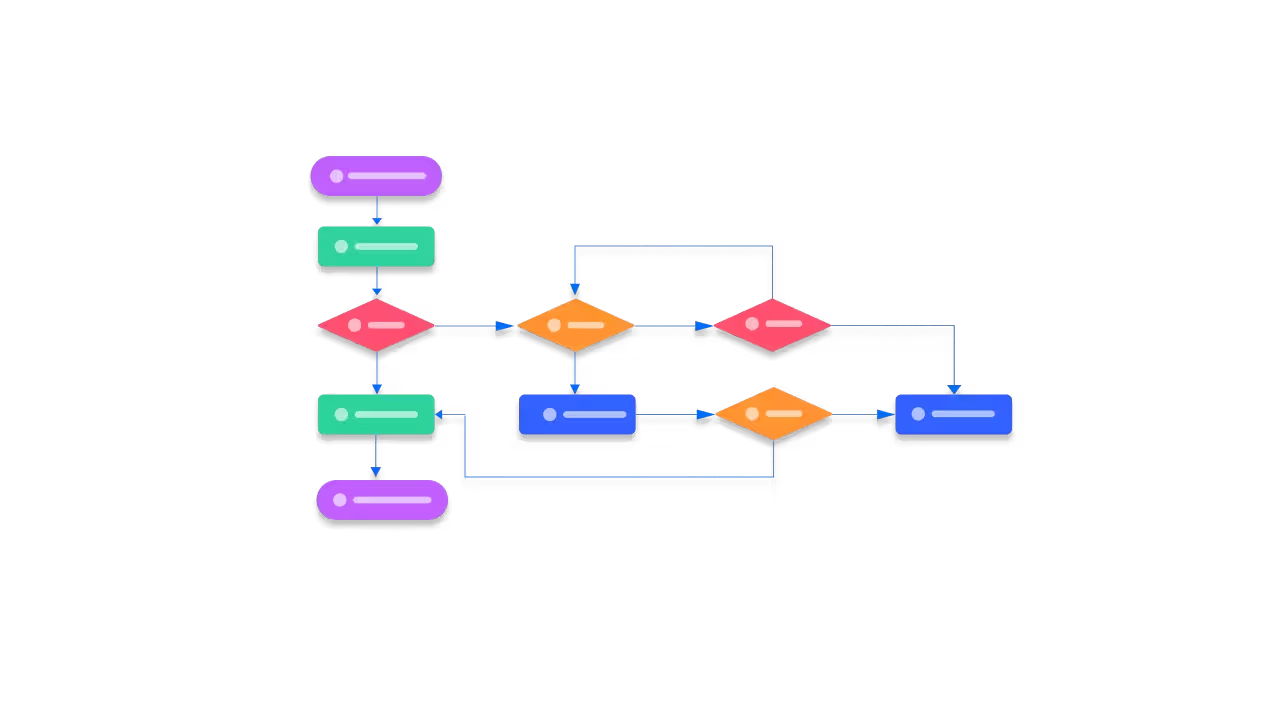
Control flow techniques
by msypniewski511 in Ruby for Rails
Conditional execution
Conditional Statements: Conditional statements, such as if-else and switch-case, allow programmers to execute different blocks of code based on certain conditions.
If/elsif unless
if/elsif/elese
if condition # code here, executed if condition evaluates to true end
if x > 10 then puts x end if x > 10; puts x; end if x > 10: puts x; end
if condition # code executed if condition is true else # code executed if condition is false end ------------------------------------------ if condition # code executed if condition1 is true elsif condition2 # code executed if condition1 is false # and condition2 is true elsif condition3 # code executed if neither conditions # nor condition2 is true, but condition3 is end
You can have any number of elsif clauses in a given if statement. The code seg-
ment corresponding to the first successful if or elsif is executed, and the rest of
the statement is ignored:
print "Enter an integer: " n = gets.to_i if n > 0 puts "Your number is positive." elsif n < 0 puts "Your number is negative." else puts "Your number is zero." end
unless
if not (x == 1) if !(x == 1) unless x == 1
Conditional modifiers
puts "Big number!" if x > 100 puts "Big number!" unless x <= 100
Case statements
Case statement operate on ===
print "Exit the program? (yes or no): " answer = gets.chomp case answer when "yes", "y" puts "Good-bye!" exit when "no" puts "OK, we'll continue" else puts "That's an unknown answer -- assuming you meant 'no'" end
Loops and looping technique
loop method
loop { puts "Looping forever!" }
loop do puts "Looping forever!" end
Controlling the loop
n = 1 loop do n = n + 1 break if n > 9 end ------------------------------------ n = 1 loop do n = n + 1 next unless n == 10 break end
while/until
while
n = 1 while n < 11 puts n n = n + 1 end puts "Done!" ------------------------------------------- n = 1 begin puts n n = n + 1 end while n < 11 puts "Done!" --------------------------------------------- n = 10 while n < 10 puts n end != n = 10 begin puts n end while n < 10
until
n = 1 until n > 10 puts n n = n + 1 end
while and until as modifiers
n = 1 n = n + 1 until n == 10 puts "We've reached 10!"
Looping based on a list of values
for in
celsius = [0, 10, 20, 30, 40, 50, 60, 70, 80, 90, 100] puts "Celsius\tFahrenheit" for c in celsius puts "c\t#{Temperature.c2f(c)}" end
Iterators
Exceptions and error handling
Code blocks, iterators, and the yield keyword
Ruby Blocks Explained | Deep Dive with Examples
Ruby map(&:method) syntax - meaning & usage
The basics of yielding to block
When you call a method—any method, any time, with or without arguments you have the option of supplying a code block.
object.method_name {
# code inside block
}
object.method_name do
# code inside block
end
The yield keyword in action
def greet puts "Hello!" yield if block_given? # Execute the block if provided puts "Goodbye!" end # Calling the method with a block greet do puts "How are you?" end
Hello! How are you? Goodbye!
Passing arguments to a code block
# in method definition: def meth(a,b,c) # code block: some_method {|a,b,c| # code here } def greet(name) puts "Hello, #{name}!" yield(name) if block_given? # Pass the 'name' argument to the block puts "Goodbye, #{name}!" end # Calling the method with a block that expects an argument greet("Alice") do |name| puts "How are you, #{name}?" end
Hello, Alice! How are you, Alice? Goodbye, Alice!
Returning a value from a code block
def more_yielding puts "The code block shall multiply a number by 10." result = yield(3) if bloc_given? puts "The result of this operation is #{result}." end more_yielding {|x| x * 10 }
The code block shall multiplay by 10. The result of this operation is 30
Performing multiple iterations
The process of yielding from a method to a block is called iteration, and any
method that yields to a block is called an iterator.
def temp_chart(temps) for temp in temps converted = yield(temp) puts "#{temp}\t#{converted}" end end celciuses = [0,10,20,30,40,50,60,70,80,90,100] temp_chart(celciuses){|cel| cel * 9 / 5 + 32 }
0 32 10 50 20 68 30 86 40 104 50 122 60 140 70 158 80 176 90 194 100 212
def greet(names) puts "Hello, everyone!" names.each do |name| yield(name) if block_given? # Yield for each name end puts "Goodbye, everyone!" end # Calling the method with a block greet(["Alice", "Bob", "Charlie"]) do |name| puts "How are you, #{name}?" end
Hello, everyone! How are you, Alice? How are you, Bob? How are you, Charlie? Goodbye, everyone!
Using different code blocks
fahrens = [32,62,92,122,152,182,212] temp_chart(fahrens) {|fahr| (fahr - 32) * 5 / 9 }
32 0 62 16 92 33 122 50 152 66 182 83 212 100
More about for
for x in array of values code end for x in [1,2,3,4,5] puts x * 10 end = [1,2,3,4,5].each {|x| puts x * 10 }
people = [Person.new("Maciej"), Person.new("Sypniewski")] names = people.map {|p| p.name} names = people.map(&:name)
0 Replies
Leave a replay
To replay you need to login. Don't have an account? Sign up for one.